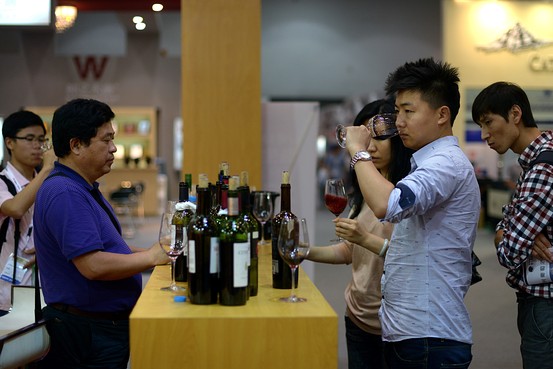How to sell wine to Chinese consumers?
How to sell wine to Chinese consumers?
In 2013, on a per capital basis, China became the biggest consumer of red wine, overtaking France and Italy succinctly. However, although there is a growing demand, selling wine has become a real challenge, and adequate knowledge of Chinese typical habits and perception on the wine have been proved to be a crucial basis to gain market share. In this article, we mainly focus on red wine which sales have grown sharply over the past five years and try to demonstrate how to sell wine to Chinese consumers?
Perception on imported wines in China
Imported wine, especially red wine is becoming popular among the upper and the emerging middle classes. Indeed, the color red is synonymous with luck, wealth and power in China but also and principally associated with the communist government. In addition, the Chinese perceive wine as healthy and an alternative at lower cost compare to other high-end drinks. Further, wine is seen by Chinese as a luxury gift. Because white wine is associated with death and seen at funerals, red wine has become the reference number one making others wines to be overlooked.
Pricing strategy

In term of pricing strategy, an imported wine priced low will unlikely be considered by Chinese. Because red wine is symbol of wealth, Chinese are more sensitive to high price.
Imported wines take advantage of the perception on European society as well as on the quality. Chinese interest for wine results from a cultural specificity.
Furthermore, buying an expensive French or Italian wine gives the buyer to earn face in China. In such context, Chinese wine consumers are typically market followers, that is to say they need to feel safe about their purchase and avoid losing face toward their guests.
Overall, although red wine is seen in China as drink to the elite, it is becoming more “fashionable” in China, especially among young people. Indeed, most foreign enterprises are now holding many tasting promotions across China helping enriching consumer knowledge of wine. In addition to that, young people are a very strong driving force.
However, foreign vineries producer are advised to take into consideration that China is not only one market but multiples markets. Selling wines in Beijing is not the same as selling them in Shanghai.
Taste of Chinese consumers and proper time for consuming wine in China

Consumer drinking habits have changed in China switching more to the mainstream culture. However and although Chinese consumers seek to emulate the drinking habits of their Western counterparts, their tasting differs. Chinese like sweet drinks. Hence, it is common in China to either drink fruited wines or to mix wine with lemon, ice or soft drinks to achieve a sweeter taste.
Wine is particularly consumed during Chinese banquets, official ceremonies and feasts. As in most Western countries, it’s not unusual for someone to propose a toast in the traditional form of gan bei. Wine has also become very popular as gift for the Chinese New Year, the Spring Festival and the mid-Autumn Festival.
In other words, wine perfectly satisfies Chinese business’s society and most well-off classes need, to enjoy socialization atmosphere.
Also, the tendency is to copy Westerners in their habits. Young Chinese emulate Western drinking habits more frequently nowadays than it is used to be. Wine-tasting club have become popular in Beijing, Shanghai and Shenzhen. It has also become easier to find specialist wine stores in the first-tier and second-tier cities. Still, until now, the stereotype of a Chinese wine drinker is a businessman with an official, over a bottle of Chateau Lafite.
How do Chinese consumers understand the concept of vineyard?
For Chinese, each wine has to taste different to ensure quality and distinction. Undoubtedly, the Chinese see vineyards for their reputation of the wines and their quality. But, in some extend, owning French vineyards gives Chinese additional credibility, prestige and international exposure.
Purchase methods of Chinese consumers
Chinese often go online to look for information on wine. Hence, social media have become source of information to exchange perception and the wine industry. Therefore, any winery willing to enter the Chinese market should seriously look at the digital world such as WeChat and Weibo as way to market their bottles but also as a way to educate consumers about the wine culture. Furthermore, several exhibitions and international wine and spirits fair are hold annually across China.

Then, how to sell wine to Chinese consumers?
Chinese consumers are clearly different from the Westerners in term of tasting and perception. That’s being said, Chinese consumers are willing to accept new sorts of wines. Ample room still exists in China to benefit from this huge market, although French, Spanish and Italian vintners have already staked out most territory. In addition, as the middle-class population increases, more consumers might be willing to get deeper understanding of wine and per se we may expect imported wine to be more popular in the coming years.
Read more:
http://online.wsj.com/articles/chinas-wine-market-shifts-toward-entry-level-1405305923



![[Podcast] China Paradigm 41: How to start a trendy wine chain in China](../wp-content/uploads/2019/05/Podcast-wine-chain-China-150x150.jpg)










